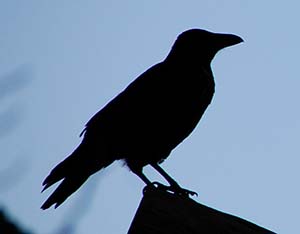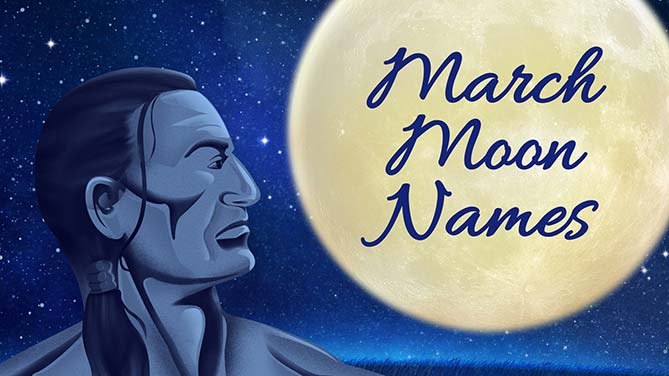March Moon Names
March is a month of transition. The seasons are changing from winter to spring in the Northern Hemisphere. South of the equator it’s moving from summer to fall. All around the world, change is prevalent. This change is no better illustrated than in the names the Native American’s had for the March moon.
Days grow longer as we progress into spring. The sun makes its way a little higher into the sky every day. For the tribes of the Northern and Great Plains, this could cause a problem. The bright sun would reflect off the white snow and could sunburn their eyes. This can cause a painful condition known as snow blindness. This inspired the Souix to name the March moon, the “sore eye moon”.
In the Great Lakes region, the warming days and chilly nights caused the snow to constantly start to melt and refreeze. An icy crust would form on top of the snow. Because of this, the Chippewa and Ojibwe tribes called the March moon the “snow crust moon.”
As the ground starts to thaw in many places, earthworms become active. In the American Northeast, the Alqonquins used the name “worm moon.” And worms make great fish bait, so it was also known as the “catching fish moon.”
The changes in the trees were also noted by many of the Native Americans. The Shawnee called the March moon the “sap moon” because the sap in the maple trees would start to run. In the American Southwest the signs of spring are a little further along. Leaves are starting to return to the tree branches. The Pueblo Indians of this region used the name “moon when the leaves break forth.”

Birds are also well represented in Native American moon names for March. Many northern tribes saw the cawing of crows as a signal that winter was over, so we have “crow moon”. Other bird related moon names are “eagle moon” (Cree), “moon of the crane” (Potawatomi) and “noisy goose moon” (Haida).
In the Southern Hemisphere, the seasonal transition is opposite. The hot days of summer are turning to the cooler temperatures of fall. There the moon names for March are “harvest moon” and “corn moon.”
This sample of Native American moon names gives us a small taste of the richness of their cultures. Their keen observation of the weather, plants and animals and tying them to cycles of the Earth and Moon demonstrates their deep connection with the natural world.
